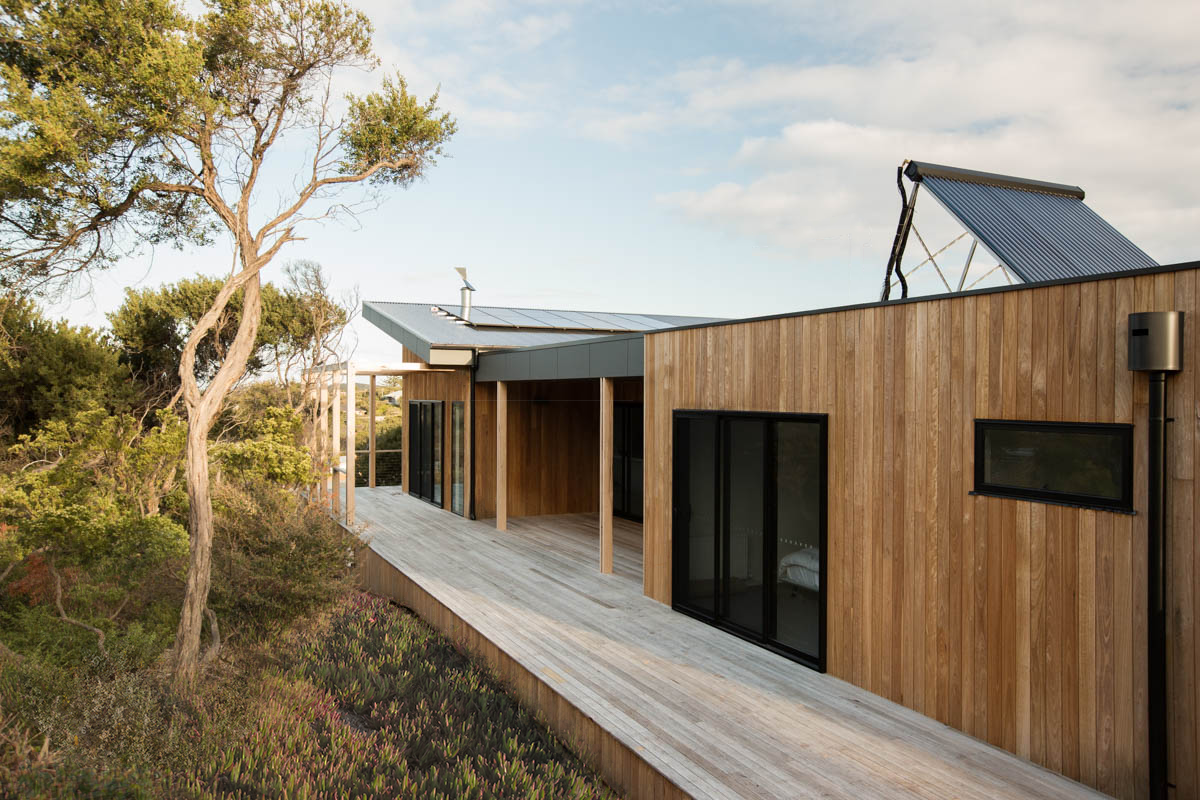04 December 2018
People Want Energy-Efficient Homes, and They’re Willing to Pay More
Properties with seven-star energy efficiency ratings are selling for a premium of almost 10 per cent compared with a typical three-star property, according to a new study involving the University of Melbourne’s Thrive Research Hub.
Using sales data from the ACT – Australia’s only jurisdiction with mandatory energy efficiency disclosure legislation – over five years from 2011 to 2016, researchers found that homes with higher NatHERS star ratings were selling for more. Compared with a standard three-star property, those with five or six-star ratings attracted premiums of two and 2.4 per cent, respectively. But things got more interesting when homes overshot the current six-star minimum for new builds. Homes with a seven-star NatHERS ratings commanded a premium of 9.4 per centover their three-star equivalents.
One of the authors, University of Melbourne’s Dr Georgia Warren-Myers, said the results showed there was a strong market for energy-efficient dwellings.

Image: Sorrento II House < < < Click to see project.
“The data shows people are valuing energy efficiency and making decisions based on the energy efficiency portrayed in these ratings,” Dr Warren-Myers said. “It has become one of the factors that people consider when they’re looking. They see the number of bedrooms, the number of bathrooms, carparks, and they see the energy star rating.”
She said some homeowners were attracted to living in homes they knew went beyond the current minimum six-star standard. “They’re going to that seven-star mark to differentiate themselves from that baseline.”
However, those with eight and nine-star homes showed no significant premium, though it may be due to a small sample size, with homes greater than seven stars representing only 0.30 per cent of stock. Dr Warren-Myers said it could also be due to a concept known as satisficing, where people perceive the minimum is six, and want to be a bit better than that. They’re demonstrating that by aiming for the seven-star mark, and not pushing further because of perceived additional investment or uncertainty.

Image: Richmond Extension < < < Click to see project.
Let’s Extend the Program Nationally
Dr Warren-Myers believes mandatory disclosure should be extended nationally to cater for the demonstrated demand for energy-efficient homes. Mandatory disclosure, she argues, could drive energy efficiency improvements in existing homes, and particularly rental stock, which suffers from a split incentive problem. “By providing a mandatory disclosure program Australia wide, decision-making by owners, occupiers and landlords will drive more energy efficient dwellings, potentially reducing carbon emissions associated with housing.”
The ACT, the study notes, has the highest level of energy efficiency improvements to existing owner-occupied dwellings in the country. While Dr Warren-Myers says there are problems with the NatHERS framework, she thinks having a mandatory rating scheme would still be of great benefit. “My personal opinion is that while NatHERs may not be perfect, it is better than having no system at all, or many different systems that may add confusion for consumers.”

Image: Clydesdale House < < < Click to see project.
The Green Lemon Problem for Rentals
Rentals followed broadly the same trend as sales, with five-star homes associated with a 3.5 per cent rental premium compared with three-star rated properties, while the premiums for six, seven and eight-10-star properties are 3.6 per cent, 2.6 per cent and 3.5 per cent, respectively. The research also found that rental prices responded positively to presence of insulation, energy-efficient windows, solar PV systems and central heating.
The ACT, however, has a few caveats in its Energy Efficiency Rating (EER) disclosure program, including that for rentals an EER is only needs to be advertised if a property has one already. Those with potentially underperforming homes may therefore be at a disadvantage by disclosing. This has created what Dr Warren-Myers calls a “quasi-voluntary system” that is undermining the entire program. “While the actual energy-efficiency level of properties for which the EER is not disclosed remains unknown, the results indicate that a non-trivial proportion of landlords respond to the predicted moral hazard situation by choosing not to disclose unfavourable rating information,” the report found.
This information asymmetry creates what Dr Warren-Myers terms a “green lemon” problem. “For tenants, who have limited capacity to make changes to a property, not knowing the energy rating means they can effectively be penalised, from the perspective of household bills,” she said.

Image: Avalon Beach House < < < Click to see project.


Image: Carbon Positive House < < < Click to see project.
“They may also end up still paying a standard rental price for a property that doesn’t actually perform.”
Currently non-disclosure rates are more than 50 per cent, which the report said compromised the consistency of the EER scheme. This non-disclosure is also higher in lower socio-economic areas, making it an equity issue. Dr Warren-Myers advocates closing the loopholes and making the EER scheme mandatory for all rental sales. The research, she said, showed that the initial outlay landlords would need to spend on bringing their properties up to an attractive level could be recovered through increased rental income and sale value. “For the future of Australia we need to be setting some minimum standards,” she told The Fifth Estate.“But first lets get a mandatory disclosure program for the whole of the country.”
We love sharing all the new and exciting things happening at Archiblox, so make sure you’re following us on Instagram, Facebook and
Twitter, or signed up to our monthly newsletter, to ensure you don’t miss a thing.
Read the original article here.